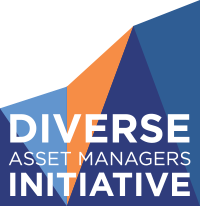DAMI Calls for Stanford Endowment to Take More Steps to Bolster Diversity
This week, DAMI executive director Robert Raben sent a letter to Stanford University CIO Robert Wallace calling for the institution’s endowment to take more concrete steps to bolster diversity. See the full letter below.
LETTER:
Mr. Robert Wallace,
I hope this finds you all well, and safe.
The Diverse Asset Managers Initiative, which I staff, is an effort to increase the representation of women and people of color in the asset management industry -- including the endowment space. We’ve had the chance to be on panels together, and I follow closely the efforts you have made to think about diversity in the context of the Stanford Management Corporation.
We are working with higher education institutions to address the troubling dearth of minority and female asset managers; asking the question of why they are not availing themselves of the ample supply which the studies show exist. We are having success with Harvard, Georgetown, the University of California, and a few notable others.
Regrettably, Stanford seems not to have joined those Universities assertively correcting for the failure to work with Black and Latinx talent over many years. You have conceded that the numbers are very low, which we appreciate. But the numbers you’ve made public aren’t precise enough to know what the baseline is, particularly for Black and Latinx managers.
Our first request is that you commit to regular, comprehensive, and public reports on the diversity of endowment managers disaggregated by race and ethnicity. Your university took a good first step towards this in response to a 2020 request from Reps. Emanuel Cleaver II and Joseph P. Kennedy III. In your response letter, you did what others did, which is tout relatively high numbers of total diversity, but masked that the numbers for Black and Latinx managers are exceptionally low. You know you have a problem sourcing and hiring Black and Latinx managers, as do other institutions. It would be useful to be straight about that, and work with others to help you.
To work together to improve this problem, we need a commitment to granular, honest, and consistent transparency. Robust examples of good reporting come from your colleagues at the University of California, and as of last week, Georgetown University. Their willingness to lay out exactly where they are is refreshing, and allows for a healthy conversation about what’s wrong and how to improve.
Beyond detailed tracking and reporting, it’s crucial to take concrete proactive steps to improve diversity. We need a real plan. And by that we mean not simply treating this as a pipeline problem in which we need to attract more students to the profession. We do, but that is too frequently a dodge, to avoid looking at the present problem: There are experienced successful managers of color that other elite institutions have found; why can’t Stanford?
In 2021, we do not have a supply problem of high-performing US-based women and people of color managing assets; we have a demand problem. There are experienced and top-notch diverse managers in every asset class. The modern question is why an organization that pledges to maximize returns isn’t working with many of them. Leaders like yourself can develop better systems to attract, vet, and onboard these Black and Latinx professionals.
Diversity boosts returns. Study after study shows it. For example, in 2019, the Knight Foundation found that diverse-owned mutual funds were overrepresented in the top quartile of mutual funds overall. Multiple analyses from the National Association of Investment Companies reveal that diverse asset managers consistently outperform benchmarks. And the Kellogg Foundation concluded that diverse managers “bring a bottom-line benefit.” The list goes on.
The conclusion is clear: Universities and colleges are sacrificing returns by failing to work with diverse talent.
We’d like to schedule a meeting with you to discuss how Stanford’s endowment can bolster its diversity. We believe we can provide valuable insight and resources to help you on the path ahead. Looking forward to your reply.
Thank you,
Robert Raben
